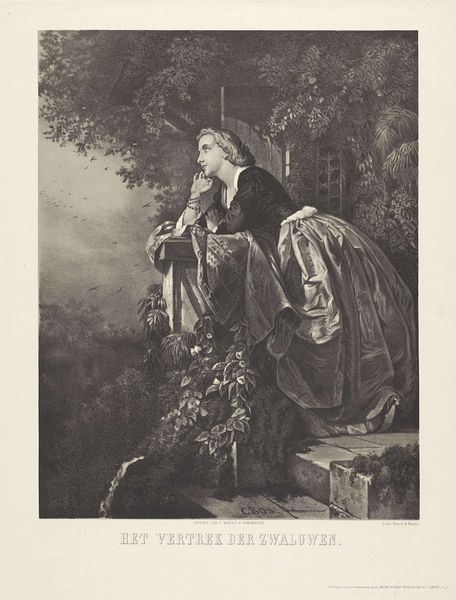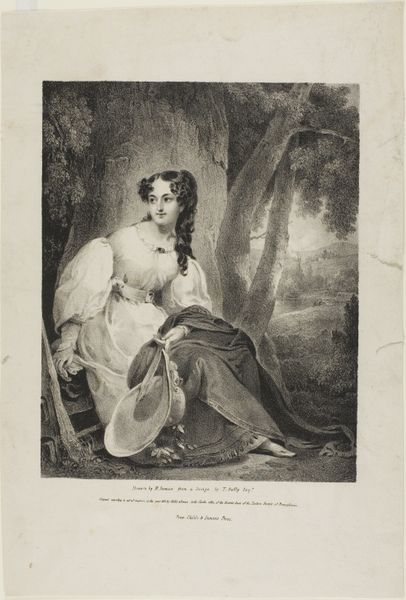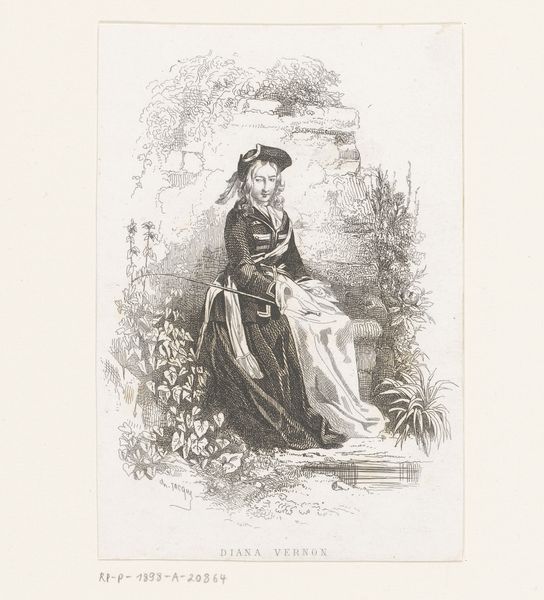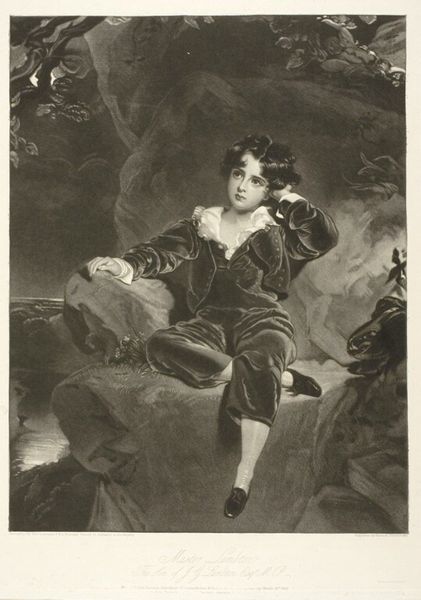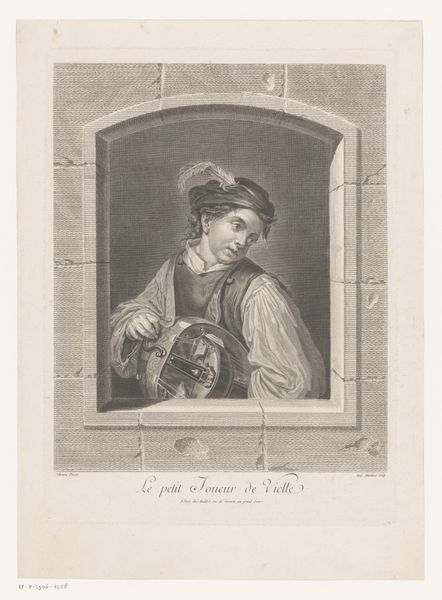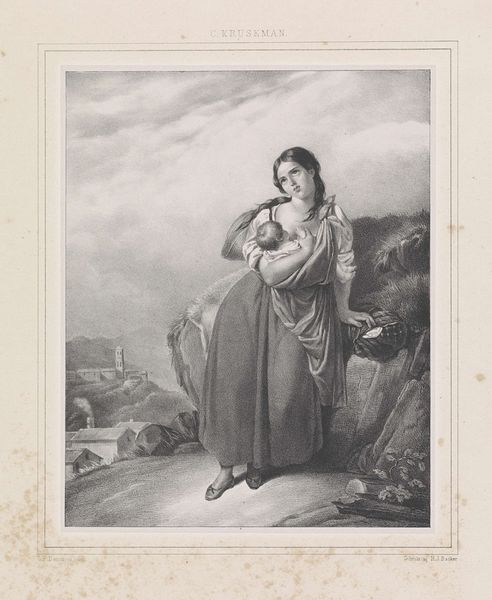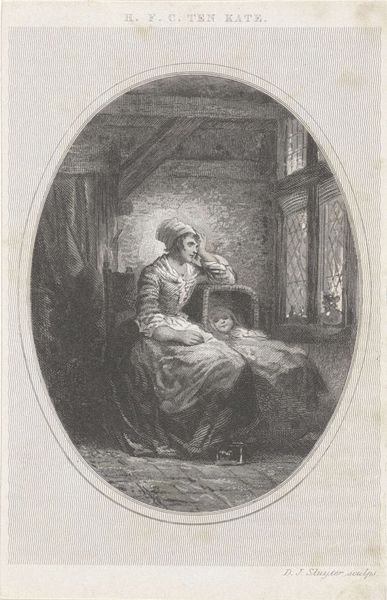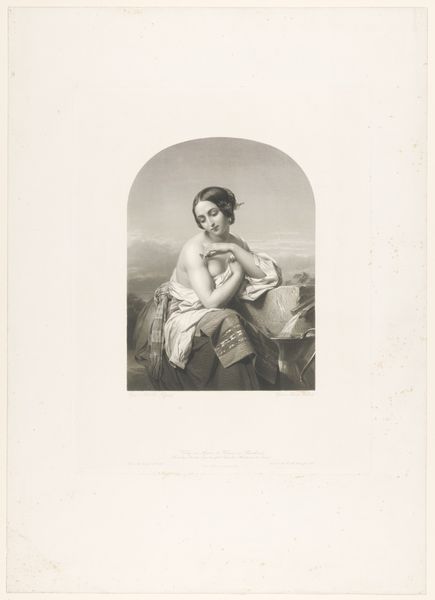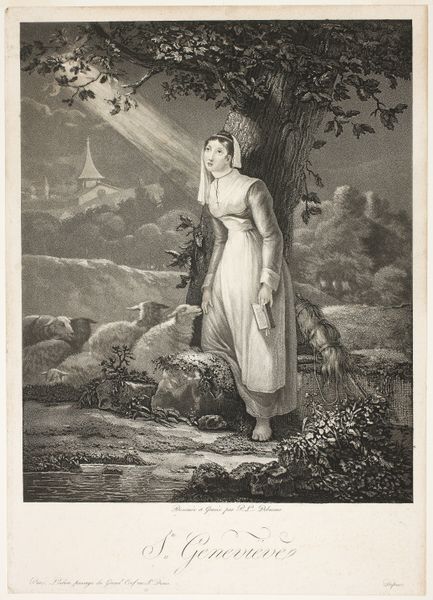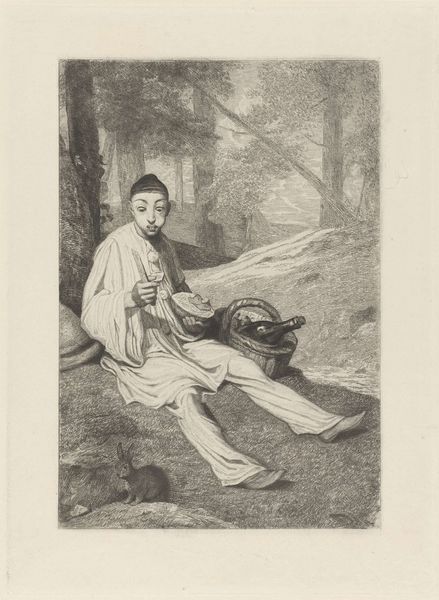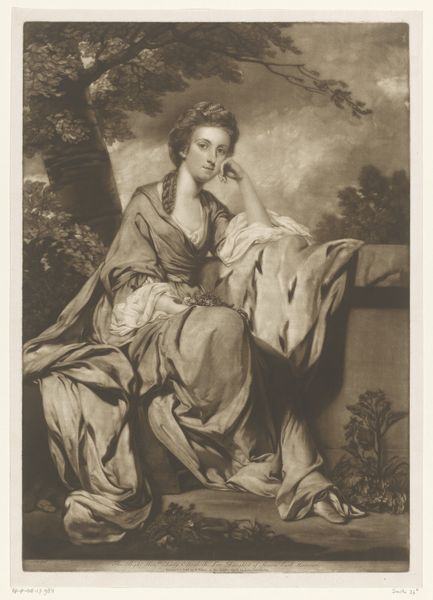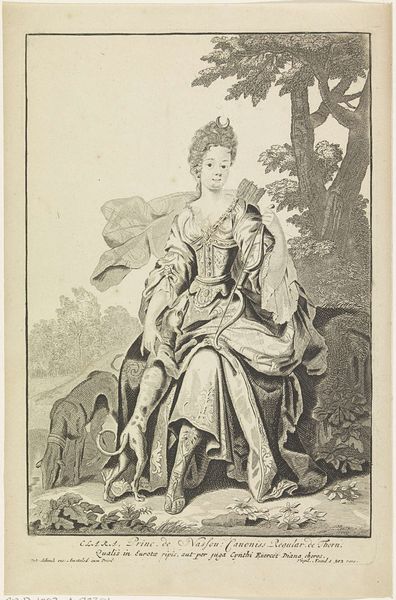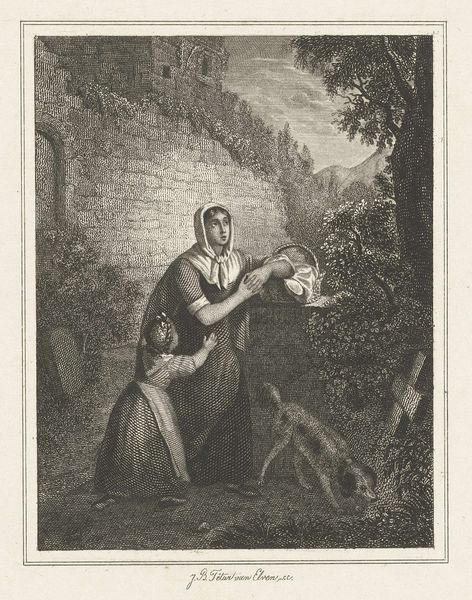
Dimensions: height 555 mm, width 440 mm
Copyright: Rijks Museum: Open Domain
Editor: Here we have "Vrouw bij een meer," or "Woman by a Lake," an engraving by Christiaan Bos, dating from 1845 to 1904. The details are remarkable. It feels so delicate. What captures your attention in this piece? Curator: As a materialist, I am struck by the technical skill required to produce this print. Consider the labor involved in creating such fine lines, the conscious choices in the production of the image, and its reproductive qualities. How does the process itself contribute to the meaning? Editor: That’s a good question! I was really drawn to the image of the woman looking at the swallows flying overhead. Does her posture suggest a relationship to the labor implied in printmaking? Curator: Precisely. Notice how her ornate dress contrasts with the medium's accessibility. Engravings were, and are, fundamentally reproducible. What social class does this bring to mind in relation to accessibility? Editor: The emerging middle class maybe, wanting art, but unable to commission original paintings? So engravings democratize art, of sorts. Curator: Yes, to some extent. But we must also consider the socio-economic conditions that allowed Bos to produce it and its audience to consume it. Also, note how gender, and the sitter, were both consumed in the romantic movement. Editor: I hadn’t thought of it that way. Considering the materiality of the print allows a new perspective. Curator: It reframes our understanding of art and its consumption. And consumption shapes culture. Editor: This has broadened my perspective, thinking about the labor and material processes beyond the initial impression. Thanks for your insights!
Comments
No comments
Be the first to comment and join the conversation on the ultimate creative platform.
